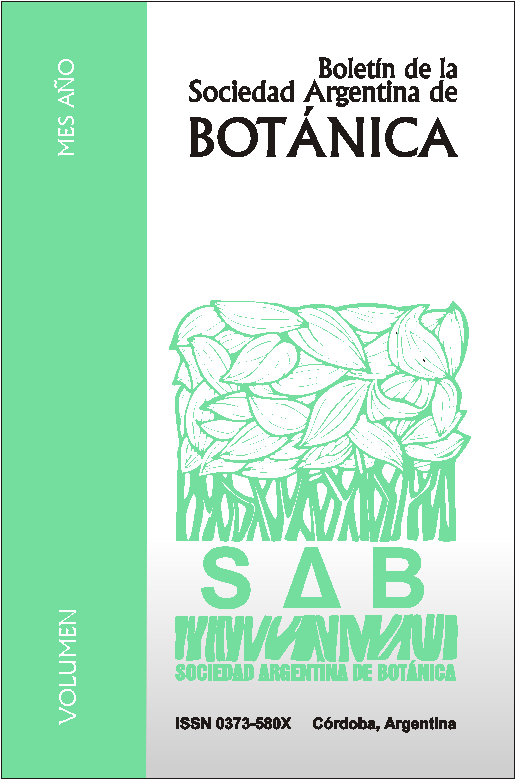Litter of woody species of nW Patagonian shrublands: composition, structure and heterogeneity.
DOI:
https://doi.org/10.31055/1851.2372.v48.n3-4.7607Keywords:
Senescent matter, leaf litter, deciduous, evergreen.Abstract
Litter of woody species of NW Patagonian shrublands: composition, structure and heterogeneity. Litter is an important component of ecosystems. It influences nutrient dynamics and microsite conditions (e.g., solar radiation, soil temperature and water retention). Consequently, litter could affect plant regeneration, either positively or negatively. Our aim was to study abundance, composition, heterogeneity and annual production of the litter produced by fifteen common woody species in shrublands of NW Patagonia. Total litter varied from 347.9 to 2534.7 gm-2. Litter accumulation in these shrublands was lower than in Andean forests but similar to other shrublands of other regions. Also, annual production of litter was lower than in other ecosystems and similar to the Patagonian Monte. Litter heterogeneity was similar among species. Perennial species accumulated and produced more litter per year than deciduous species. These results could be important to understand the regeneration process and nutrient cycling at the community scale. In both functional groups we found some species with extreme values in most variables and others which intermediate values which represent a variation gradient. This provides this system with a high diversity of microsites associated with litterDownloads
Downloads
How to Cite
Issue
Section
License
Provides immediate and free OPEN ACCESS to its content under the principle of making research freely available to the public, which fosters a greater exchange of global knowledge, allowing authors to maintain their copyright without restrictions.
Material published in Bol. Soc. Argent. Bot. is distributed under a Creative Commons Attribution-NonCommercial-ShareAlike 4.0 International license.









